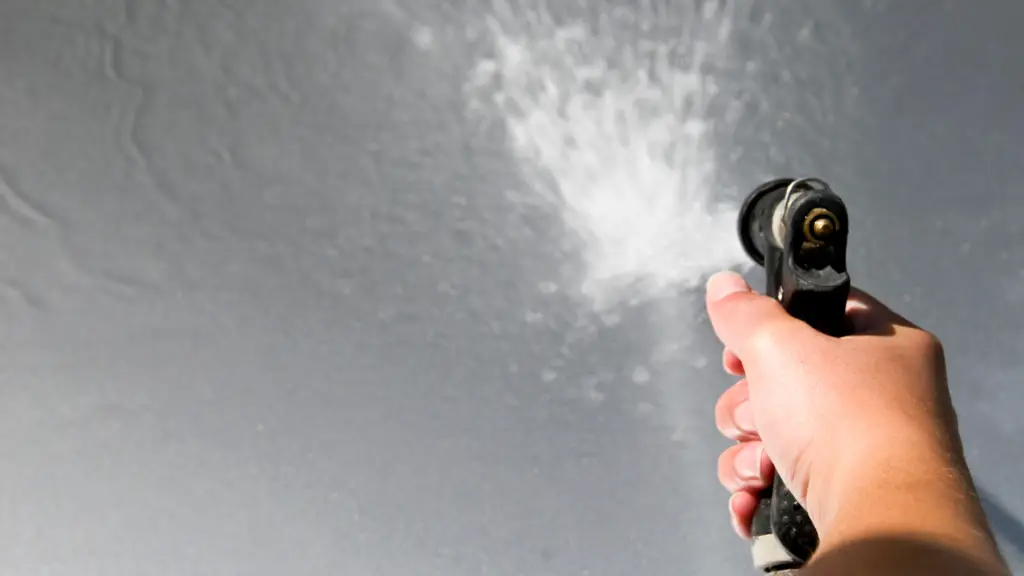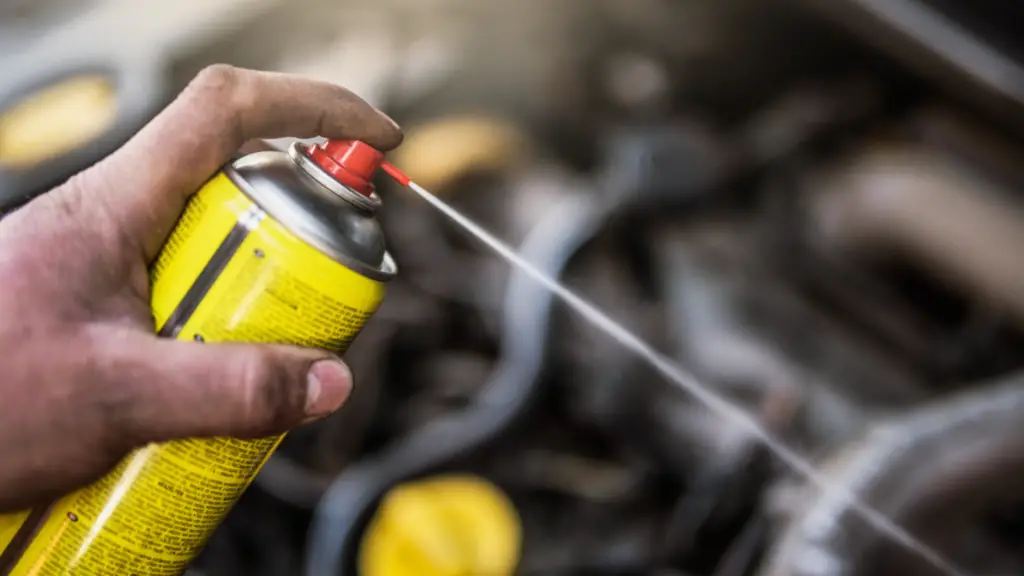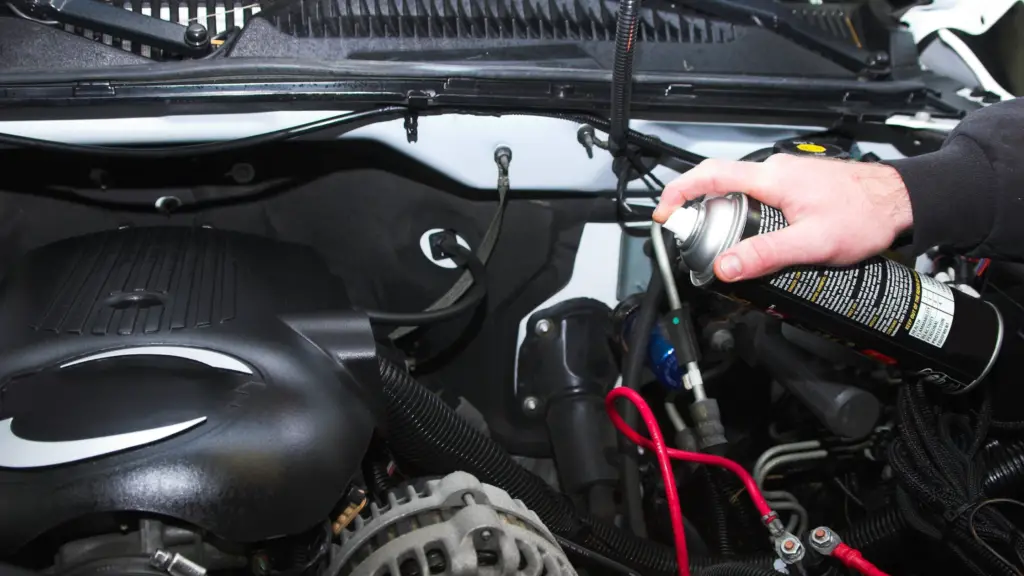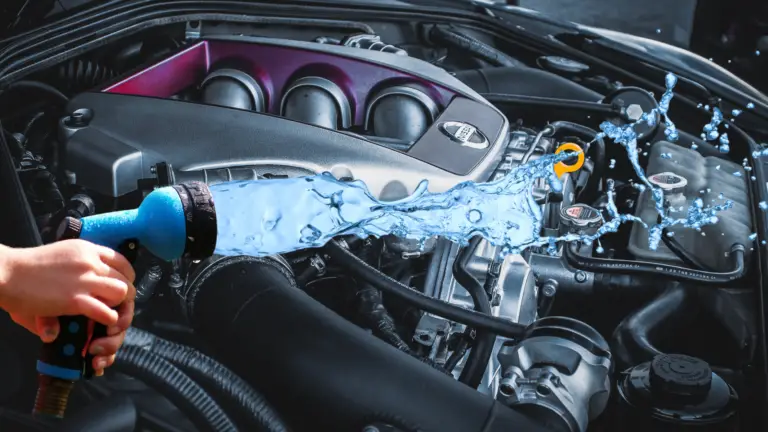Disclosure: This page may contain affiliate links. If you purchase a product from one of our links, we could receive a commission from the seller, however, these do not influence our editorial choices. We aim to recommend products we believe in and to not mislead our audience. Learn More »
Parts underneath the hood of your car can get dirty. They can become covered in grease, dirt, dust, soot, or even debris, such as leaves. If you are looking to clean under the hood in a quick and easy manner, you may wonder if you can spray water under the hood of your car.
The short answer is that, yes, you can spray water under the hood of your car, as long as the engine is cool and you avoid or cover certain sensitive engine parts.
Contents
What parts under the car can be sprayed with water?

In general, you can spray a large portion of the engine. The bulk of the engine, including the cylinder head covers, intake manifolds, exhaust manifolds, and engine block are usually okay. As long as you’re not using a high-powered power washer you shouldn’t be damaging any gaskets or seals.
The radiator and radiator fan should be pretty safe, as well as any reservoirs for coolant, windshield washer fluids. The fuse blocks should also be sealed against moisture, but older cars with degrading seals may be an issue.
If your car has a hood liner insulation on the underside of the hood, you can often spray this to rinse it out if it’s not too dirty or physically damaged.
You shouldn’t have any major issues with any of these components as long as you are sure that the engine is cooled. Never spray a hot engine.
But there are some parts of the engine that you will want to either avoid or take steps to cover up parts that cannot be sprayed with water.
What parts under the hood should you avoid spraying with water?
Most components in the engine compartment are protected against at least moderate amounts of moisture that may occur as a result of normal driving. Water can come through the front grill or hood seams when driving through rain, as well as could splash up from underneath the car when driving through standing water or puddles.
But depending on how much water you’re spraying and the pressure with which the water will be sprayed, you may have issues due to that higher water pressure, and some components should be avoided or covered.
Prior to spraying underneath the hood of your car, you will want to use plastic bags or sheets to cover up important elements that can be damaged if they are sprayed with water. These can include (but are not limited to) the alternator, spark plugs and holes, any open or visible sensors, and any visible wiring or electric components.
What should you do if you spray the wrong parts with water?

If water penetrates your plastic bags and the parts do get wet, you may be able to resolve this by spraying WD-40 on the water. The WD-40 helps to immediately displace moisture, helping to remove the water before it can cause damage or cause a short.
Unfortunately though, if large amounts of water saturate parts that should not get wet, WD-40 may not do the trick and those parts may become permanently damaged or require manual disassembly to dry out by hand.
You may need to replace any weakening seals or electrical tape wraps around any sensor or connection that got water inside it, or dry out quick connects by hand with a paper towel or clean shop rag.
How can you properly clean under your hood?

While just spraying water can help to remove less stubborn dirt, dust, grease, and debris from the engine, there are actually better alternatives to using water.
The first thing you should do to clean under your hood is to manually remove any sizable debris, such as leaves.
Next, you can use an engine degreaser to break up oils and residue. After allowing the degreaser time to sit on the engine and work, you can use engine brushes or rags to scrub the engine clean.
We mentioned earlier that you can often hose down the hood liner, but there are better ways to clean the hood liner insulation. If you’re cleaning your engine you’ll probably also want to take the time to clean your engine’s hood insulation as well.
You can then use rags dampened with clean water to remove any leftover residue from the degreaser. This helps to get under your hood clean without any of the worries that go into spraying water under the hood of your car.


You’re right. Cleaning the car engine is necessary for keeping the car running in good condition, preventing mechanical and electronic problems, and prolonging the car’s life. But if there is n’ t your article, I won’t don’t know how to do it. Thanks a lot.